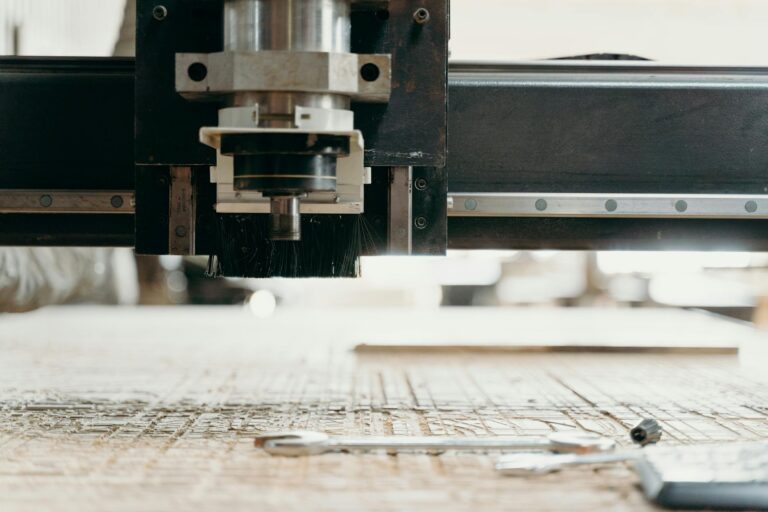Multi-axis machining is a marvel of modern manufacturing, blending precision and complexity to craft intricate components. Yet, for all its potential, it comes with its own set of challenges. The expertise of a CNC machine company in Alabama can make a world of difference, offering solutions tailored to the demands of this advanced process. Let’s dive into the lesser-known aspects of multi-axis machining and how these challenges can be tackled with finesse.
Overcoming Material Stress Points During Intricate Machining Processes
When working on multi-axis machining, material stress points can quickly become the Achilles’ heel of your project. These stress points emerge due to uneven cutting forces or improper fixturing, often leading to deformation, cracking, or warping of the material.
A skilled Alabama CNC machine company knows how to manage these challenges by focusing on pre-machining strategies. For instance, analyzing the material’s properties before starting helps anticipate how it will behave under stress. Additionally, strategies like balanced cutting paths and advanced coolant systems are used to minimize heat and distribute forces evenly. This thoughtful approach reduces stress buildup, ensuring the final product is both precise and durable.
For manufacturers, these solutions not only improve outcomes but also cut down on costly rework. Every project benefits from a proactive approach, making material stress management a critical part of multi-axis success.
Balancing Tool Wear and Performance in High-demand Multi-axis Operations
Tool wear is an unavoidable reality in multi-axis machining. However, the balance between performance and longevity is often misunderstood. With machines cutting at various angles and engaging the workpiece differently with every pass, tools face immense pressure.
CNC machine companies in Alabama are well-versed in optimizing tool life while maintaining efficiency. One common approach is to select tools with advanced coatings that resist heat and wear. Pairing this with dynamic feeds and speeds tailored to the specific task ensures that tools perform at their peak without burning out prematurely.
Furthermore, regular inspection and predictive maintenance keep tools in top condition, preventing unexpected failures. This balance not only extends tool life but also improves the overall efficiency of multi-axis operations, saving both time and money.
Streamlining Programming for Seamless Transitions Across Multiple Axes
Programming is the brain behind any successful multi-axis machining operation. The transition from one axis to another requires precise coordination, and even a minor miscalculation can lead to scrap parts or machine downtime.
The expertise of a CNC machine company in Alabama shines in this area. Their approach often includes using advanced CAM (computer-aided manufacturing) software to streamline the programming process. This software simplifies complex toolpaths, ensuring smooth transitions across axes.
What’s more, experienced machinists refine these programs to account for real-world variables like material behavior and machine dynamics. This human touch complements the technology, resulting in error-free transitions and efficient machining.
Addressing Alignment Challenges in Intricate Component Manufacturing
Precision is the backbone of multi-axis machining, and proper alignment is non-negotiable. However, achieving perfect alignment is often easier said than done, especially when working with components featuring complex geometries.
An Alabama CNC machine company tackles this challenge with a combination of high-precision equipment and expert techniques. For example, laser alignment tools are frequently used to set up machines accurately before cutting begins. Additionally, advanced probes within the machines themselves continuously check and adjust alignment during the machining process.
This level of precision ensures that every cut is exactly where it needs to be, even when dealing with intricate designs. By eliminating alignment errors, manufacturers can achieve the tight tolerances required for today’s high-performance parts.
Innovating Clamping Solutions for Stability in Dynamic Machining Tasks
In multi-axis machining, stability is key. The more dynamic the task, the more challenging it becomes to keep the workpiece firmly in place. Traditional clamping methods often fall short, leading to vibrations, inaccuracies, or even part damage.
CNC machine companies in Alabama often innovate clamping solutions to overcome this. Modular fixturing systems, for instance, allow for customizable setups that adapt to the shape and size of the component. Additionally, vacuum clamps or magnetic holding systems are used for parts that can’t be secured with conventional methods.
These advanced clamping solutions not only ensure stability but also speed up changeovers between different parts. This efficiency boosts overall productivity while maintaining the accuracy multi-axis machining demands.
Enhancing Operator Expertise to Navigate Advanced Multi-axis Systems
While technology drives multi-axis machining, skilled operators are the ones who truly bring it to life. Operating these systems requires more than just technical knowledge; it demands intuition, experience, and adaptability.
In Alabama, CNC machine companies emphasize training their operators to master the nuances of multi-axis systems. This training often includes hands-on experience with different materials, tools, and machine settings. Operators learn to troubleshoot issues on the fly, adjust programs for better results, and even improve cycle times through smarter setups.
Investing in operator expertise isn’t just about avoiding mistakes—it’s about maximizing the potential of every machine. Experienced operators can push the boundaries of what’s possible, turning complex designs into flawless components with remarkable efficiency.



